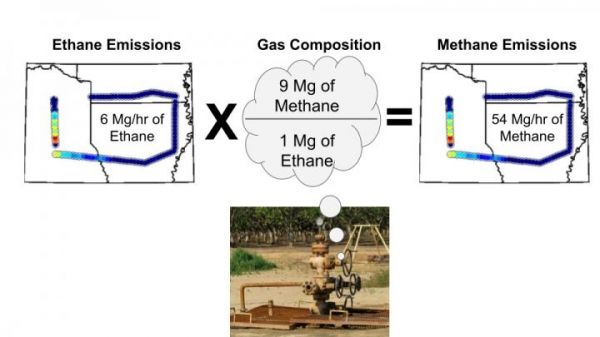Measuring ethane in the atmosphere shows that the amounts of methane going into the atmosphere from oil and gas wells and contributing to greenhouse warming is higher than suggested by the U.S. Environmental Protection Agency, according to an international team of scientists who spent three years flying over three areas of the U.S. during all four seasons.
"Ethane is a gas that is related only to certain sources of methane," said Zachary R. Barkley, researcher in meteorology and atmospheric science, Penn State. "Methane, however, is produced by oil, gas and coal fields, but also by cow's digestive systems, wetlands, landfills and manure management. It is difficult to separate out fossil fuel produced and natural methane."
The Atmospheric Carbon and Transport (ACT) America data made it possible to quantify methane emissions from oil, gas and coal sources, because the project measured not only methane, but also ethane. The researchers note that methane identified with ethane can be reliably connected to fossil fuel sources, however, the ratio of ethane to methane does vary with individual sources.
Read more at: Penn State
Once the amount of ethane emissions are determined, the researchers combine that information with the gas composition data from a particular basin to convert the solved ethane emissions into methane emissions. (Photo Credit: Zachary Barkley, Penn State)


